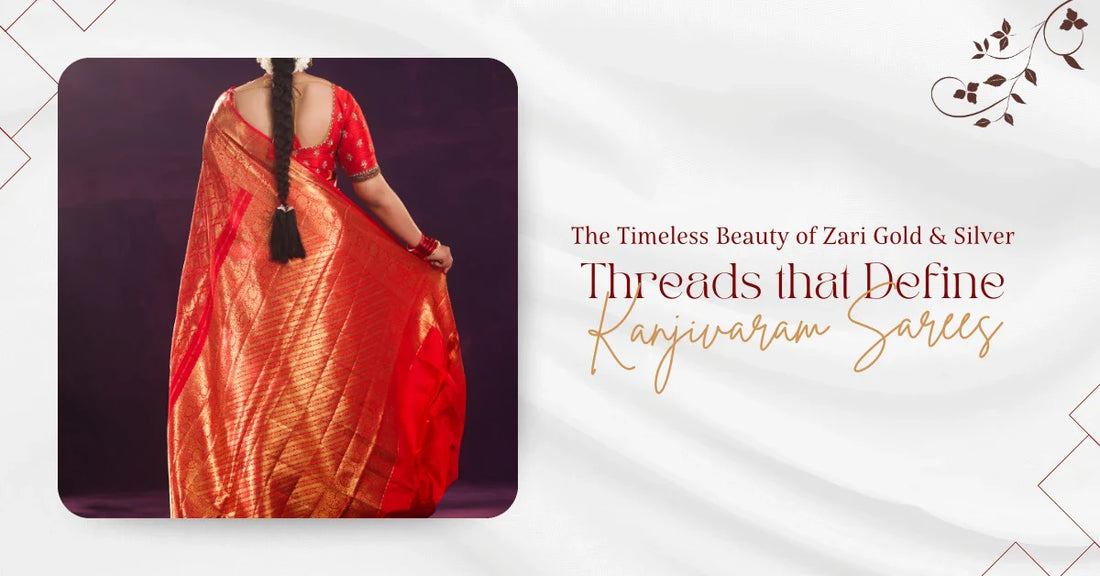The Timeless Beauty of Zari – Gold and Silver Threads that Define Kanjivaram Sarees
Introduction
Every Kanjivaram saree tells a story, and at its heart lies zari — the shimmering gold and silver threads that bring each weave to life. Beyond just decoration, zari is a symbol of royalty, prosperity, and craftsmanship that has been treasured for centuries.
The History of Zari
-
Zari-making originated during the Mughal era and later became an integral part of South Indian handlooms.
-
Kanchipuram weavers perfected the art by using real gold and silver to create durable, intricate borders and pallus.
-
Traditionally, zari was considered auspicious and reserved for grand occasions like weddings and temple ceremonies.
The Process of Weaving Zari into Sarees
-
Pure silver threads are dipped in gold to form genuine zari.
-
These threads are carefully woven into mulberry silk to create timeless motifs like temples, peacocks, lotuses, and geometric designs.
-
The combination of heavy silk and glowing zari ensures the saree never loses its grandeur.
Sri Krishna Silks’ Commitment
At Sri Krishna Silks, we source authentic zari from trusted artisans, ensuring that every saree carries the glow of purity. Whether it’s a bridal pattu or a festive drape, our zari sarees are made to be heirlooms.
Conclusion
Owning a zari-rich Kanjivaram saree isn’t just about luxury — it’s about holding a piece of India’s cultural heritage, woven in threads of gold and silver.



